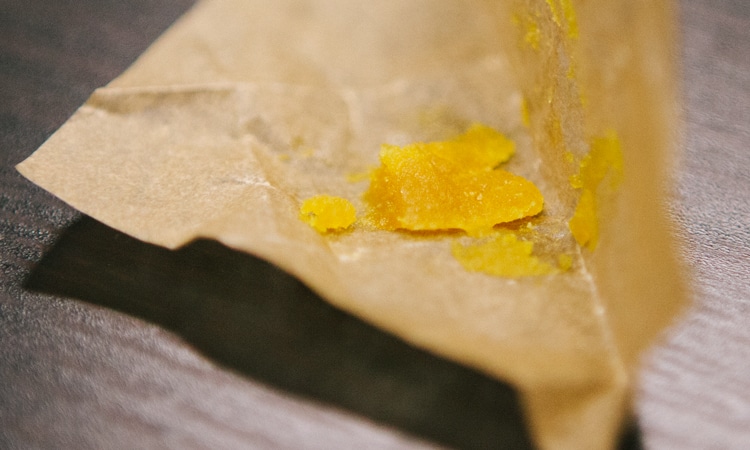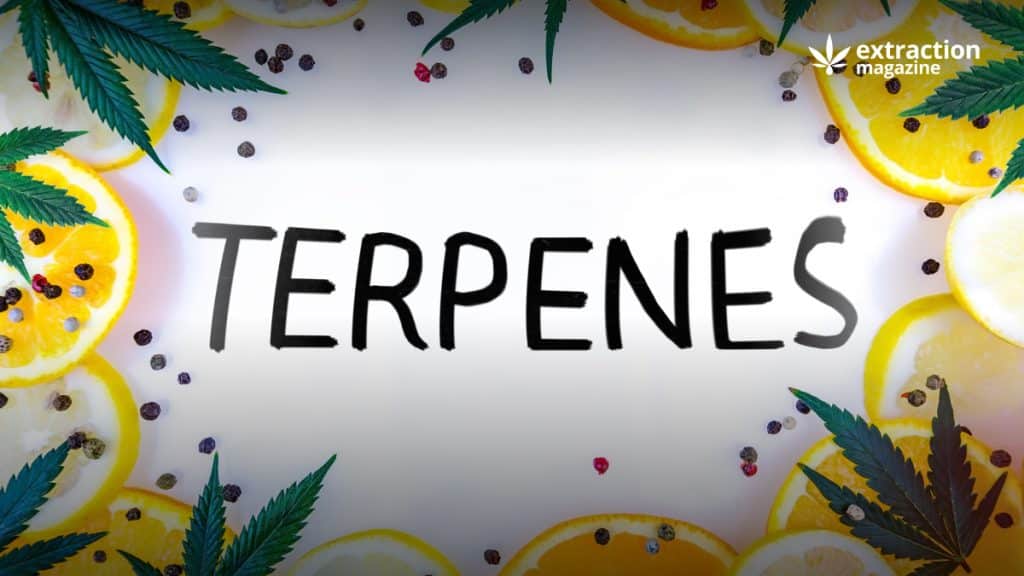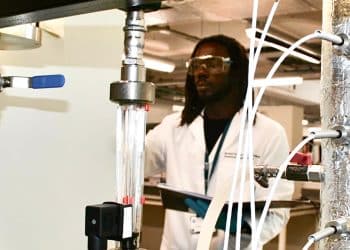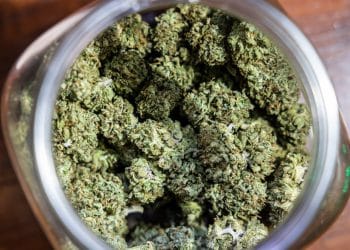Terpenes are produced by all plants, including the cannabis plant. In fact, cannabis produces more than 140 different terpenes, according to ProjectCBD.
This varied class of organic compounds can be terpene extraction from the plant matter for the development of natural byproducts, including teas and tinctures. Terpenes are responsible for giving every cannabis variety its pleasant and unique aroma, and can be preferentially extracted from plants leaving unwanted compounds behind.
Understanding Terpenes and Their Importance
Terpenes are organic compounds found in a variety of plants. They give plants their unique aromas and flavors. Scientists have discovered that these substances do more than just appeal to our senses. Terpenes have significant roles in plant biology, including acting as a part of the plant’s defense system against predators and environmental stresses.
Moreover, terpenes have attracted interest for their potential therapeutic benefits. In aromatherapy, they are used to promote relaxation and alleviate stress. Medical research suggests that terpenes may offer health benefits due to their anti-inflammatory, antibacterial, and analgesic properties.
Overview of Terpene Extraction Techniques
Scientists use various methods to extract terpenes, the aromatic compounds in plants. Distillation is a common method. It uses heat to vaporize terpenes, which then condense into a pure form. Solvent-based techniques involve chemicals like butane or ethanol. These solvents dissolve plant materials and release terpenes.
The choice of extraction method impacts two key factors: purity and yield. Purity refers to how clean the terpene extract is from impurities. Yield measures the amount of terpenes extracted from a given quantity of plant material.
They focus on optimizing parameters such as temperature, pressure, and solvent choice to maximize yield without compromising purity. Innovations also aim at reducing environmental impact by using greener solvents or waste reduction techniques.
Steam Distillation and Its Role in Terpene Extraction
Scientists often use steam distillation to extract terpenes from plants. This method has stood the test of time due to its effectiveness. It starts with boiling water, which generates steam. The steam then passes through plant material, such as leaves or flowers. As it moves through, it picks up volatile compounds like terpenes.
The vaporized mix of steam and terpenes travels next into a cooling system. Here, it condenses back into liquid form. This liquid contains both water and the extracted terpenes, which are usually separated easily because of their different densities.
Solvent Extraction Methods for Terpenes
Solvent extraction is a popular method to isolate terpenes from plant materials. In this process, scientists use chemicals such as ethanol or hexane. These solvents are effective in dissolving a broad spectrum of terpene compounds. Unlike steam distillation, which primarily captures the more volatile terpenes, solvent extraction can also target less volatile ones.
The procedure begins with soaking the plant material in the chosen liquid solvent. The solution then pulls out the essential oils containing terpenes from the plant’s matrix. After sufficient contact time, they separate the liquid containing terpene extracts from the solid plant matter. However, an important step follows: purification. This step ensures that no residual solvents remain in the final product because these chemicals can be harmful if ingested or applied topically.
-
Pros:
-
Can extract a wider range of compounds;
-
Effective on less volatile terpenes.
-
Cons:
-
Requires post-extraction purification;
-
Use of potentially hazardous solvents.
Scientists must carefully control conditions during solvent extraction to optimize yield and purity. They aim to achieve an efficient extraction process while minimizing any potential degradation of delicate terpene structures. Once extracted, these concentrated essences have various applications ranging from flavoring agents to therapeutic products due to their aromatic and medicinal properties.
Post-extraction steps typically involve methods like rotary evaporation or vacuum distillation. These methods help remove any remaining solvent without damaging sensitive components within extracts.
A Modern Approach to Terpenes
CO2 extraction stands out in the cannabis industry as a sophisticated method for isolating terpenes. This technique employs supercritical carbon dioxide to dissolve and extract organic compounds from different cannabis genotypes. Scientists favor this approach because it allows for precise control over extraction parameters. They can adjust temperature and pressure settings to target specific terpenes, enhancing the selectivity of the process.
The use of supercritical CO2 is also hailed for its environmental benefits. Unlike other solvents, carbon dioxide has low toxicity which makes it safer for both producers and consumers. Moreover, it doesn’t leave harmful residues in the end product, ensuring a pure experience for users seeking quality cannabis products.
 Hydrodistillation in Isolation
Hydrodistillation in Isolation
Hydrodistillation is a traditional method used by scientists to extract terpenes from plant materials. It involves immersing the botanical matter, such as floral tissue, in water. The mixture is then brought to a boil. This process allows for the release of terpenes into the vapor phase, which condenses back into liquid form upon cooling.
This technique has specific applications. It works well for isolating terpenes that are either water-soluble or can withstand high temperatures without degrading. Such resilience makes hydrodistillation suitable for certain types of compounds like some monoterpenes and sesquiterpenes found in cannabis and other aromatic plants. However, there are challenges with this approach:
-
It tends to be more labor-intensive;
-
There’s a risk of altering or destroying heat-sensitive volatile terpenes;
-
The process may not always result in maximum terpene preservation compared to modern methods.
Compared to CO2 extraction discussed earlier—which preserves volatile compounds through cooler temperatures—hydrodistillation operates on the opposite end of the spectrum involving heat application. While CO2 extraction is efficient for extracting a wide range of terpene profiles including delicate ones, hydrodistillation focuses on those less affected by thermal processes.
Analytical Methods for Terpene Analysis
Following the hydrodistillation process, scientists employ various analytical methods to profile and understand terpenes. One of the most common techniques is gas chromatography-mass spectrometry (GC-MS). This method effectively separates terpene compounds based on their volatility and mass. It provides detailed information about the types and quantities of terpenes present in a sample.
Another important technique is high-performance liquid chromatography (HPLC). Unlike GC-MS, HPLC can analyze non-volatile terpenes that are not easily vaporized or decomposed by heat. It works well for substances that have higher molecular weights or are less stable at high temperatures.
Spectroscopic methods also play a crucial role in analyzing isolated terpenes. These techniques offer insights into the molecular structure without destroying the sample. They can reveal details such as functional groups and chemical bonds within the molecules.
Quality Control Measures in Terpene Production
Scientists emphasize the importance of standard operating procedures (SOPs) to maintain consistency in terpene extracts. These SOPs serve as detailed guides for every step of the production process. They ensure that each batch of terpenes meets the same quality criteria. By following these procedures, producers can achieve a reliable product profile. This is critical for consumers who expect uniformity in flavor, aroma, and therapeutic benefits.
Rigorous testing protocols are another cornerstone of quality control in terpene extraction. Scientists conduct tests to determine purity and potency levels before products reach the market. Such measures help identify any contaminants or variations from expected chemical compositions. The results guide manufacturers in maintaining high-quality standards across all batches.
Compliance with regulatory standards is non-negotiable for consumer safety. It involves adhering to guidelines set by authorities like the Food and Drug Administration (FDA) or similar bodies worldwide. Producers must navigate complex regulations regarding product labeling, marketing claims, and permissible compound levels.
Why are terpenes extracted from cannabis?
While some people may extract terpenes to enjoy the unique aroma of a particular cannabis variety in the form of an essential oil, others may perform terpene extraction purely to treat widespread medical conditions.
Let’s take a look at the medicinal benefits of some non-psychoactive cannabis terpenes:
- Limonene – Antioxidant, anti-inflammatory and anti-cancer.
- Myrcene – Anti-inflammatory, analgesic and anti-mutagenic.
- Linalool – Antinociceptive and anticonvulsant.
- α-Pinene – Anti-inflammatory and chondroprotective properties.
- Caryophyllene – Anti-inflammatory and analgesic.
- Camphene – Antioxidant and hypolipidemic agent.
How are terpenes extracted from cannabis?
Generally, extraction will be carried out using one of two techniques – butane extraction or supercritical CO2 extraction. Both solvents involve the use of a closed-loop system.
There are pros and cons to the following methods of terpene extraction:
- Butane Extraction – The more dangerous of the two, butane extraction is used to develop some of the strongest byproducts on the cannabis marketplace. This technique produces flavorful terpene expression and a strong final product. With this method, butane seeps through the cannabis flower to separate terpenes from the plant material. Less environmentally friendly than CO2 extraction, oils generated from butane extractions will likely contain traces of residual solvents. However, butane terpene extractions are so fragrant that they ensure a significantly better representation of the strain aroma.
- Supercritical CO2 Extraction – Tough on the cannabis plant, CO2 terpene extraction relies on intense pressure to strip the cannabis resin of its pungent terpenes. Phase changes are created in CO2 using pressure and temperature. There is less risk of the final product being polluted than extractions from butane. CO2-extracted oils tend to smell quite similar because they contain dominant terpenes like limonene and humulene.
Conclusion
The chemical diversity of cannabis terpenes makes these fragrant oils perfect for creating industrial products, such as biofuels, lubricants, flavors, fragrances and medicines. Since the terpenes extracted from cannabis may comprise such a wide range of structures, the purity will vary based on the amount of plant material, the plant’s physical properties and the chemical properties of the targeted terpene.
References
https://www.projectcbd.org/science/terpenes/smell-mystery
https://www.ncbi.nlm.nih.gov/pmc/articles/PMC3165946/pdf/bph0163-1344.pdf
https://www.ncbi.nlm.nih.gov/pubmed/28260017
https://www.ncbi.nlm.nih.gov/pubmed/19798672
https://www.ncbi.nlm.nih.gov/pubmed/27622736
https://www.ncbi.nlm.nih.gov/pubmed/24455984
https://www.ncbi.nlm.nih.gov/pmc/articles/PMC5083753/
https://www.ncbi.nlm.nih.gov/pmc/articles/PMC4718691/
https://herb.co/marijuana/news/butane-vs-co2-extraction-compare

 Hydrodistillation in Isolation
Hydrodistillation in Isolation










